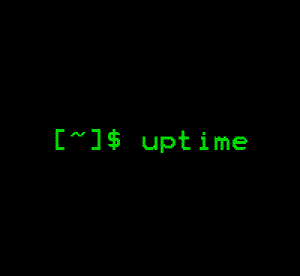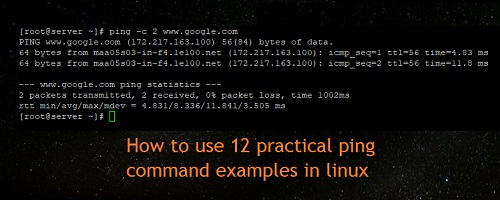Understand Linux Load Averages and Monitor Performance of Linux
Description In this article, we will explain one of the critical Linux system administration tasks – performance monitoring in regards to system/CPU load and load averages. Before we move any further, let’s understand these two important phrases in all Unix-like systems: System load/CPU Load – is a measurement of CPU over or under-utilization in a Linux […]
Linux Uptime Command With Usage Examples
Description The Linux Operating System is filled with several commands which any aspiring Linux expert or power user e.g. system admin must have a good grasp of. One of such commands is uptime and today, I’ll briefly discuss its purpose and syntax. Uptime is a command that returns information about how long your system has been running together with […]
Linux grep command examples
Description grep is a powerful file pattern searcher that comes equipped on every distribution of Linux. If, for whatever reason, it is not installed on your system, you can easily install it via your package manager (apt-get on Debian/Ubuntu and yum on RHEL/CentOS/Fedora). 1.Search and Find Files Let’s say that you have just installed a fresh copy of the new Ubuntu on your machine, and […]
How to find out which process listening on a particular port
Description A port is a logical entity which represents an endpoint of communication and is associated with a given process or service in an operating system. In this blog we can see the different ways of finding the process/service listening on a particular port in Linux. 1.Using netstat Command netstat (network statistics) command is used to […]
10 lsof Command Examples in Linux
Description lsof meaning ‘LiSt Open Files’ is used to find out which files are open by which process. As we all know Linux/Unix considers everything as a files (pipes, sockets, directories, devices etc). One of the reason to use lsof command is when a disk cannot be unmounted as it says the files are being used. With the help of this command we can easily identify […]
How to find out who is using a file in Linux
Description We can use the lsof command to know if someone is using a file, and if they are, who. It reads kernel memory in its search for open files and helps you list all open files. In this case, an open file may be a regular file, a directory, a block special file, a character […]
How to use 12 practical ping command examples in linux
Description Ping is a simple, widely used, cross-platform networking utility for testing if a host is reachable on an Internet Protocol (IP) network. It works by sending a series of Internet Control Message Protocol (ICMP) ECHO_REQUEST messages to the target host and waiting for an ICMP echo reply (or ECHO_RESPONSE). You can run a ping test in order to establish if your computer can communicate […]
How to disable SSH Root login in Linux
Description The root account is often the most targeted account by crackers via SSH under Linux. An enabled SSH root account on a Linux server exposed to a network or, worse, exposed in Internet can pose a high degree of security concern by system administrators. The SSH root account should be disabled in all cases in Linux in order […]
How To Create a Linux Swap File
Description We will explain swap space, and learn how to create swap space using a swap file in Linux: this is important in case we don’t have a swap partition created on the hard disk. Swap space/partition is space on a disk created for use by the operating system when memory has been fully utilized. […]
How to create a virtual HardDisk volume using a File in Linux
Description Virtual Hard Disk (VHD) is a disk image file format which represents a virtual hard disk drive, capable of storing the complete contents of a physical hard drive. It’s a container file that acts similar to a physical hard drive. The disk image replicates an existing hard drive and includes all data and structural features. […]









